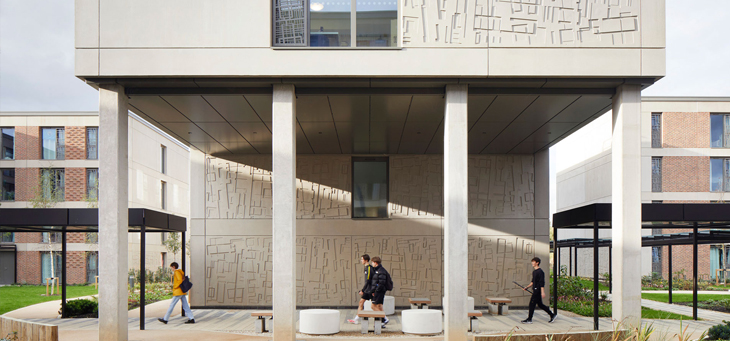Sustainability Series: Week 2, Precast concrete and MMC

Webinar: Modular concrete: recent leaner and lower carbon developments
Recorded: 21 September 2023
The efficiency of offsite constructure systems using concrete helps to reduce their embodied carbon. This webinar brings together speakers to share their experience on recent projects utilising additional measures to save carbon, and provide other sustainability benefits.
A recording of this event is now available in the on-demand library.
_______________________________________________________________________________________________________
Blog: Precast concrete - making progress
This week of The Concrete Centre’s Sustainability Series has been dedicated to precast concrete and MMC (Modern Methods of Construction) and it provides the opportunity to consolidate and share some of the work that the UK precast concrete manufacturers have been doing to maintain, improve and report their sustainability credentials. The industry’s Sustainability Charter was launched over 15 years ago and is now a mandatory membership requirement of MPA Precast and MPA Masonry - to report on the company’s Sustainability Charter performance and be audited annually under the scheme.
There has been much progress, across a range of priorities, including energy, carbon and biodiversity, with some impressive recent developments. Figures in the latest annual Precast Concrete and Masonry Report indicate that use of low carbon cementitious materials in precast and masonry rose by 72% since 2017 and that 31% of all energy used in architectural and structural precast factories is renewable.
There is, of course, still work to do but I am encouraged by the progress and the degree of research and innovation taking place. The ‘Decarbonising precast concrete’ project by Akerlof for example, which demonstrated significant upfront embodied carbon savings on a live project using precast concrete, through collaboration and process optimisation (Decarbonising concrete | (akerlof.co.uk), or the low carbon concrete and reinforcement solution being trialled by Laing O’Rourke in its ‘Megaplank’ structural system and new modular bridge system, which will be included in the presentations in the webinar for this week. And the MPA is working with the Low Carbon Concrete Group (LCCG) to help develop an embodied carbon intensity benchmarking system for precast concrete.
The carbon credentials of construction using precast concrete do not just rely on the carbon intensity of the materials used in manufacture; the inherent material efficiency of many offsite concrete solutions is also an important factor. In The Concrete Centre’s software CONCEPT, which compares the embodied carbon of different concrete framing solutions, precast hollowcore floors often feature amongst the lowest carbon of the solutions due to the combination of prestressing and voids. Concrete cladding panels have also been demonstrated to be the lowest embodied carbon compared to other material solutions, in part by avoiding the need for additional sub-frames for support.
Another way to improve material efficiency is to reduce waste production during manufacture and construction. This is already a recognised benefit of concrete offsite manufacture, with precision and quality control facilitated by factory production. Just-in-time delivery enables assembly direct from the delivery vehicle, often with little or no need for additional packaging or protection materials due to the robust and weatherproof nature of concrete.
Also featured in the webinar event in Week 2 of the series, was the new University of York campus student accommodation where collaboration with manufacturers helped to simplify construction using a precast concrete crosswall system. The cellular nature of this structure typically results in slim concrete elements, but further resource efficiency was achieved by using the inherent acoustic and fire performance of the concrete, combined with a high-quality finish, to largely avoid the use of plasterboard. This also provided the opportunity to use the benefit of the thermal mass of the concrete to help reduce energy use in the building.
Designers should not overlook the role they play in helping to improve the credentials of the precast concrete they require. Standardisation of element shapes and sizes can reduce the amount of material needed for creating formwork for example, and the details of window reveals may require thicker cladding panels than is structurally necessary.
So, while the industry is making good progress to decarbonise, so much more is possible and can be achieved faster through collaboration.
Further guidance on the range and benefits of concrete offsite solutions can be found here.
Written by Elaine Toogood, Director, Architecture and Sustainable Design